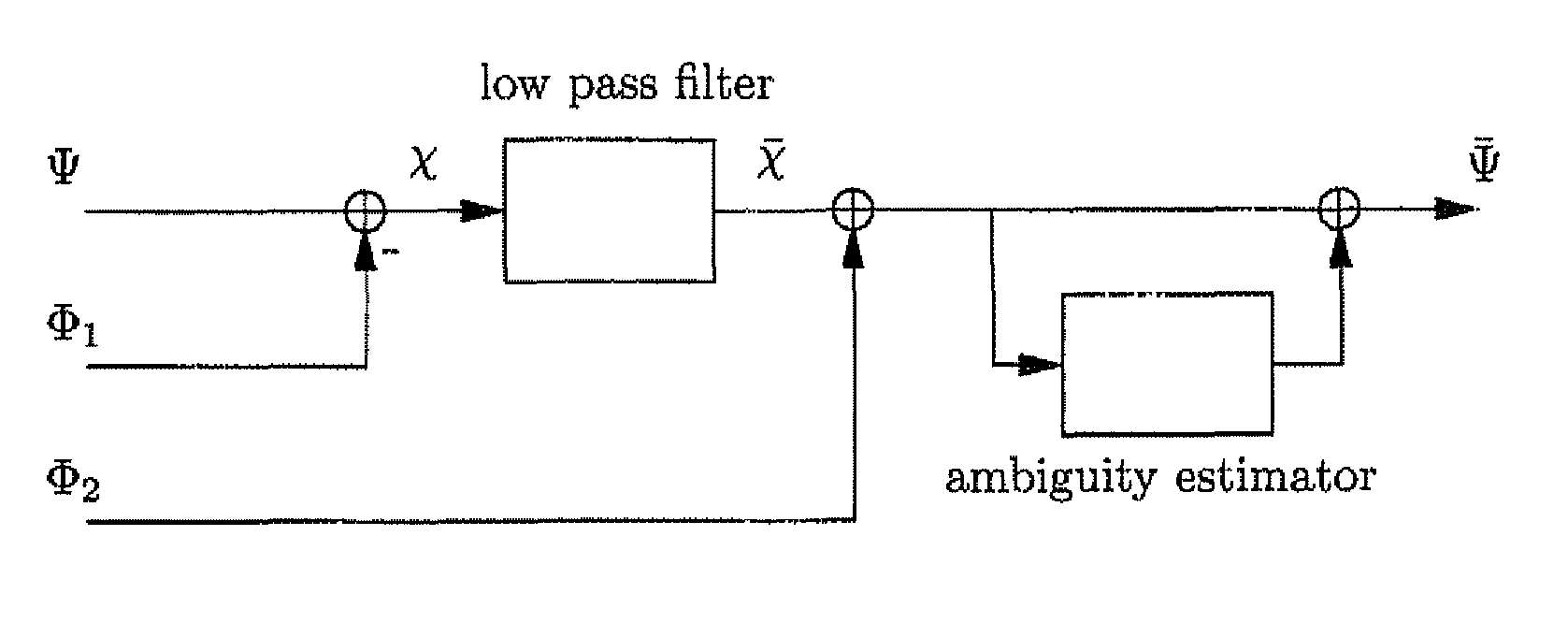Method for determining the distance between a transmitter and a receiver
a distance and receiver technology, applied in the field of determining the can solve the problems of affecting the multipath delay determined by the ranging code, and increasing the noise variance, so as to achieve the effect of more reliable position of a receiver
- Summary
- Abstract
- Description
- Claims
- Application Information
AI Technical Summary
Benefits of technology
Problems solved by technology
Method used
Image
Examples
Embodiment Construction
1. Introduction
[0042]The smoothing of ranging codes using carrier signals is a popular approach to reduce code noise and code multipath. It was introduced by Hatch and is used in the Wide Area Augmentation System (WAAS), as well as in the European Geostationary Navigation Overlay Service (EGNOS). It is also considered for Ground Base Augmentation Systems (GBAS). Traditional code smoothing has the inconvenience that the ionospheric delay affects the code and carrier phase with opposite signs. Long smoothing intervals and large ionospheric delays are correspondingly both critical factors when applying this method. Two alternative approaches address this issue. They are based on dual-frequency measurements and were introduced by Hwang et al. and Mc. Graw et al. They are called ionospheric-free and divergence-free smoothing, respectively. The availability of an aeronautical CAT III type of navigation service using these smoothing approaches was analyzed by Konno et al. Their analysis sh...
PUM
 Login to View More
Login to View More Abstract
Description
Claims
Application Information
 Login to View More
Login to View More - R&D
- Intellectual Property
- Life Sciences
- Materials
- Tech Scout
- Unparalleled Data Quality
- Higher Quality Content
- 60% Fewer Hallucinations
Browse by: Latest US Patents, China's latest patents, Technical Efficacy Thesaurus, Application Domain, Technology Topic, Popular Technical Reports.
© 2025 PatSnap. All rights reserved.Legal|Privacy policy|Modern Slavery Act Transparency Statement|Sitemap|About US| Contact US: help@patsnap.com



